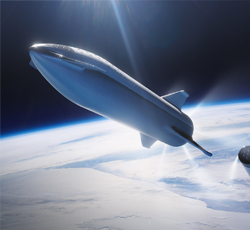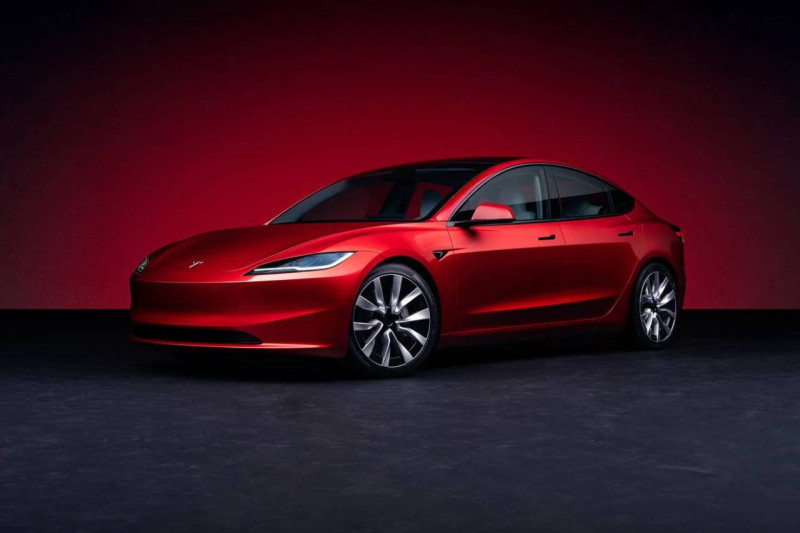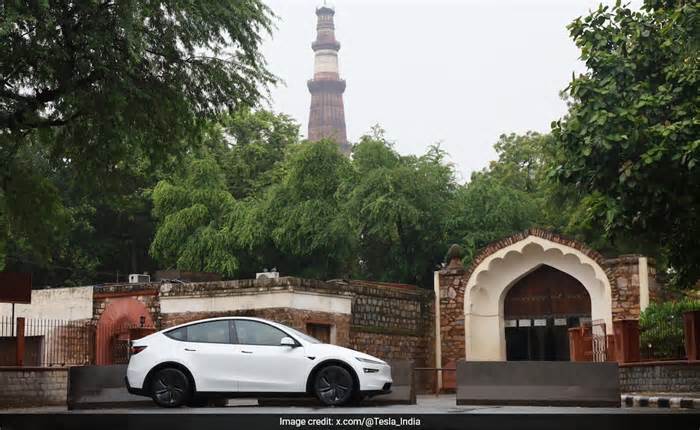
NASA probes will study how solar wind triggers potentially dangerous ...
- by CBS News
- Jul 24, 2025
- 0 Comments
- 0 Likes Flag 0 Of 5

CBS News Space Consultant
Bill Harwood has been covering the U.S. space program full-time since 1984, first as Cape Canaveral bureau chief for United Press International and now as a consultant for CBS News. SpaceX launched twin satellites for NASA Wednesday that will study how the electrically-charged solar wind interacts with Earth's magnetic field, creating constantly changing and occasionally dangerous
"space weather" affecting satellites, electrical grids and other critical systems.
The identical TRACERS satellites will operate in the magnetosphere, "the region around our Earth that is dominated by the planet's magnetic field, and it protects us from the stellar radiation and really from everything else that's going on in space," said Joseph Westlake, director of NASA's solar physics division.
"What we will learn from TRACERS is critical for the understanding and eventually the predicting of how energy from our sun impacts the Earth and our space and ground-based assets, whether it be GPS or communication signals, power grids, space assets and our astronauts working up in space.
"It's going to help us keep our way of life safe here on Earth."
A SpaceX Falcon 9 rocket blasts off from Vandenberg Space Force Base in California carrying seven satellites, including NASA's twin TRACERS probes,
SpaceX
Hitching a ride to space along with TRACERS atop a SpaceX Falcon 9 rocket were five other small satellites, including one that will use a new "polylingual" terminal to communicate with multiple other satellites and space probes using different protocols.
Another will collect data about how much solar energy Earth absorbs and reemits into space, known as the "radiation budget," and another that will focus on how high-energy "killer electrons" are knocked out of the Van Allen radiation belts to rain down into the atmosphere.
Two other small satellites were aboard, including an experimental "cubesat" that will test high-speed 5G communications technology in space and another built by an Australian company carrying five small satellites to test space-based air-traffic management technology that could provide aircraft tracking and communications anywhere in the world.
The mission got underway at 2:13 p.m. EDT when a SpaceX Falcon 9 rocket roared to life at launch complex 4E at Vandenberg Space Force Base on the California coast. The launching one day late because of a regional power outage Tuesday that interrupted air traffic communications over the Pacific Ocean near Vandenberg.
The second time around, the countdown ticked smoothly to zero and after boosting the upper stage and payloads out of the lower atmosphere, the first stage peeled away, reversed course and flew back to a landing near the launch pad.
A camera mounted on the Falcon 9's second stage shows the reusable first stage falling away and heading back to landing at Vandenberg, SpaceX's 27th booster recovery in California and its 479th overall.
SpaceX
A few seconds later, the upper stage engine shut down to put the vehicle in its planned preliminary orbit. The two satellites making up the primary TRACERS payload were deployed about an hour-and-a-half after launch.
Two of the other smallsats were to be released earlier in a slightly different orbit, with the remainder following TRACERS a few minutes later.
TRACERS is an acronym for Tandem Reconnection and Cusp Electrodynamics Reconnaissance Satellites. The twin spacecraft, built by Boeing, will fly in tandem in the same orbit, 10 seconds to two minutes apart, helping researchers precisely measure rapid changes indicating how the solar wind "couples" with Earth's magnetic field.
"So the Sun is a burning, fiery ball of plasma and as it burns, it blows off an exhaust that we call the solar wind, it's a plasma, and that's always streaming from the sun towards the Earth," said David Miles, principal investigator at the University of Iowa.
"And sometimes, the magnetic field of the Earth basically stands it off in the same way that if you have a rock in a stream, the water kind of flows around it. But other times, those two systems couple (and) you dump mass, energy and momentum into the Earth system."
An artist's impression of the TRACERS satellites, flying one after the other in the same orbit. With two identical satellites, scientists expect to measure rapid changes in the near-Earth space environment as the solar wind interacts with Earth's magnetic field.
NASA
Please first to comment
Related Post
Stay Connected
Tweets by elonmuskTo get the latest tweets please make sure you are logged in on X on this browser.






 Energy
Energy


















